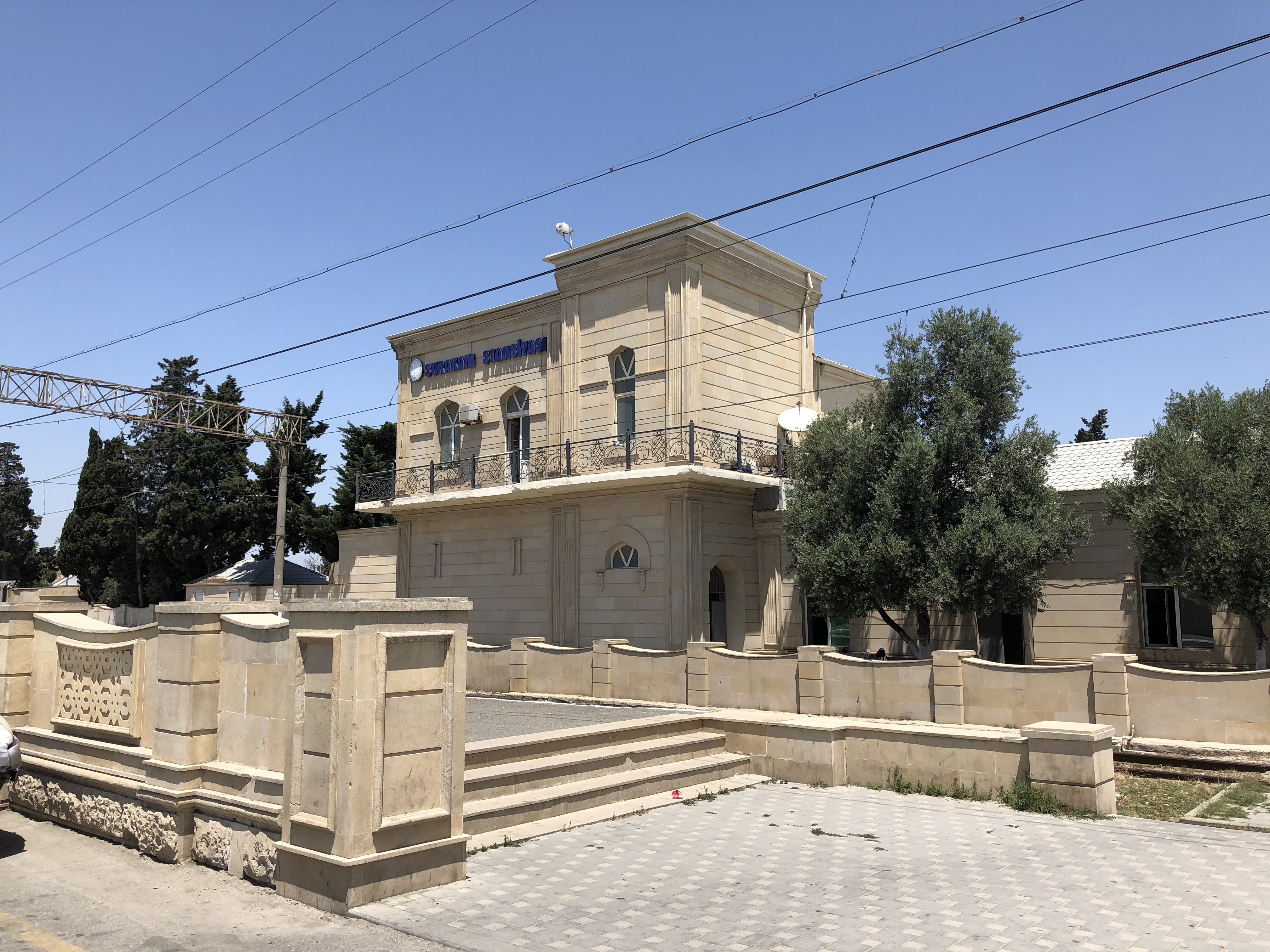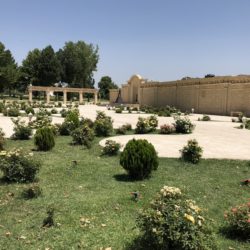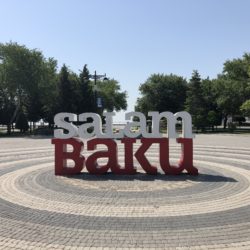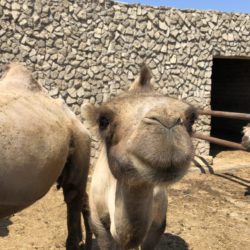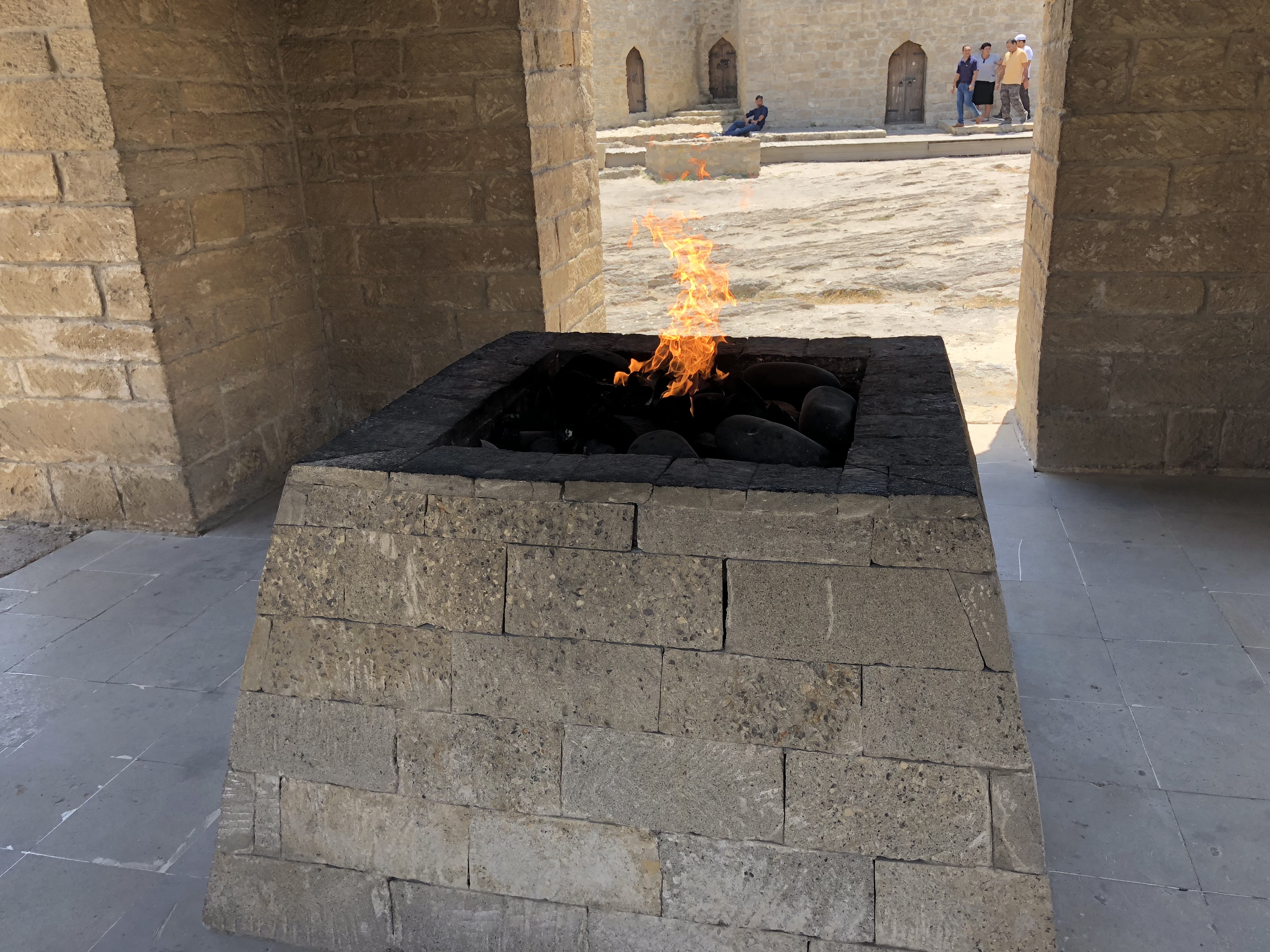
The Abşheron Peninsula: From Koroğlu to Suraxanı
While the most popular day trip from Baku is a drive down to Qobustan, a city south of the capital that boasts both millennia-old petroglyphs and active mud volcanoes, I decided to spend the day I always set aside for excursions outside my urban adventures in the Abşheron Penisula, an area just east of Baku that juts into the Caspian Sea. Abşheron means “salty water” in Persian; the peninsula is home to both salt flats and some of the largest oil reserves in the country. Azerbaijan is home to a wide variety of climates and biomes and Abşheron is the driest of the bunch, receiving only eight inches of rain each year. Even though most of the sights are only 20-25 miles outside Baku, the desert-like peninsula feels like you’ve traveled to different planet although.
You could spend an entire week exploring the Abşheron Peninsula and only see a fraction of what the region has to offer. The villages are spread out and it isn’t exactly easy to get around from place to place. Some people at my hostel (the great Sahil Hostel) had discussed splitting the cost for a private driver who could whisk them around the peninsula for the day, but I wanted to not only save money, but also challenge myself by seeing as much as could by utilizing only the public bus system. This is neither the easiest nor the most efficient was to explore Abşheron, but it’s the cheapest, gives a nice sense of adventure and was a way for me to prove to myself that I could rise to the challenge of a somewhat daunting task.
Techinically the buses on the Abşheron Peninsula are part of the Baku greater metropolitan area bus system, but the actual vehicles share little in common with the brand new intercity buses that run through the capital proper. The Baku buses (and metro) run on the electronic “BakıKART,” a plastic card that you load with money and simply tap a sensor when you enter a bus or metro station. It’s a super easy system, but your card won’t do you any good once you get out onto the peninsula, where the buses haven’t been swapped out for their modern, air-conditioned, wifi-equipped cousins in the city. Here you get the full experience of old-school Azerbaijani public transportation. Bring plenty of coins; the rides are cheap, but you’ll need to pay in cash and the driver won’t be thrilled if he has to make change from big bills. You don’t pay until you depart the bus, when the driver estimates how long you’ve been traveling and names a price. I was easily the only American/tourist and people were friendly and curious about what I was doing alone on a bus so far out the city. Everyone says they want to meet locals and experience authentic culture when traveling and it doesn’t get any more real than this!

With the help of some of the awesome staff at Sahil Hostel, I learned that the best starting point to catch one of the many buses heading into the peninsula was at the bus station just outside the Koroğlu metro stop. Dozens of bus lines intersect at Koroğlu and to make matters even more confusing, the outbound vs inbound markings on the buses were not always clear to me. It’s best just to ask someone where to wait for the correct bus and not risk traveling in the wrong direction.
From Koroğlu I took Bus 184 to Suraxanı, a direct route which took about 30-35 minutes. The 184 that goes outbound into the Abşheron Peninsula is actually across the street from the metro station, in front of the National Gymnastics Arena. At first, I almost hopped on a 184 in the parking lot behind the Koroğlu station and luckily verified with the driver in which direction the bus was heading. He kindly pointed me in the right direction, and with the aid of a few more friendly Azerbaijanis, I was on my way…I wanted an adventure, right?
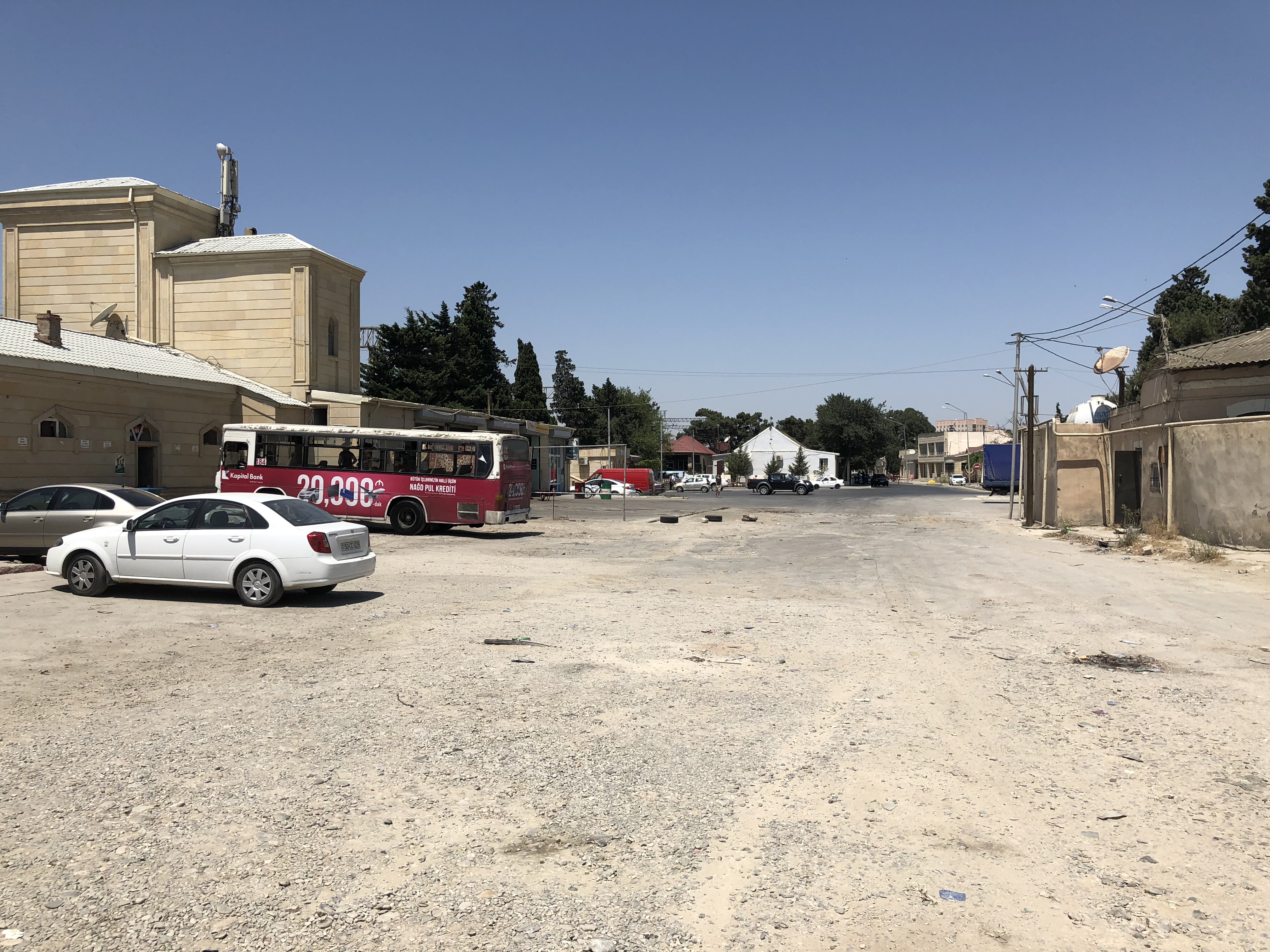
Unlike in Baku proper, the bus stops aren’t always (or ever) labeled and the only way you’re going to be able to figure it out is to ask people. If you’re shy and looking to come out of your shell, this is the perfect activity for you!
Suraxanı, like most of the towns and villages on the Abşeron Peninsula, has its “claim to fame” historical sight that draws in most visitors. That may be the main reason to go, but don’t neglect the actual towns and villages themselves. I enjoyed strolling the narrow streets, checking out people’s gardens and watching kids kick around a soccer ball before the temperature climbed too high.
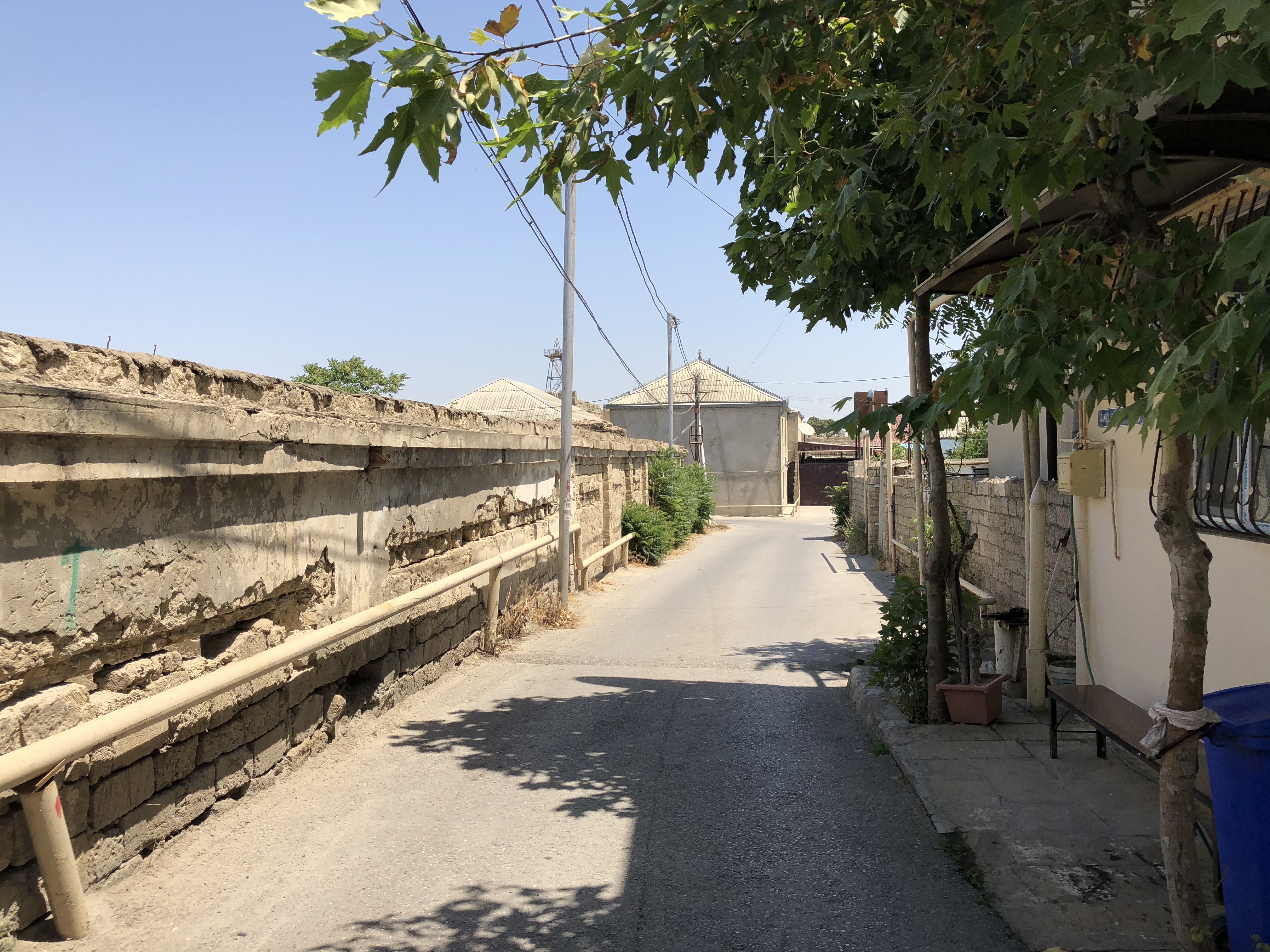
The prize of Suraxanı is the Atəşgah məbədi (Atashgah Temple), a late 16th Century Zoroastrian temple that has been converted to an historical sight/museum, but is still used as a functioning temple during the holiday of Novruz. Atəşgah literally means “House of Fire” in Azerbaijani and there is evidence of fire temples standing on this spot for centuries before the current temple was built. There is a natural gas leak under the bedrock of the Atəşgah məbədi, providing a power source for the fire that attracted worshippers to the this spot.
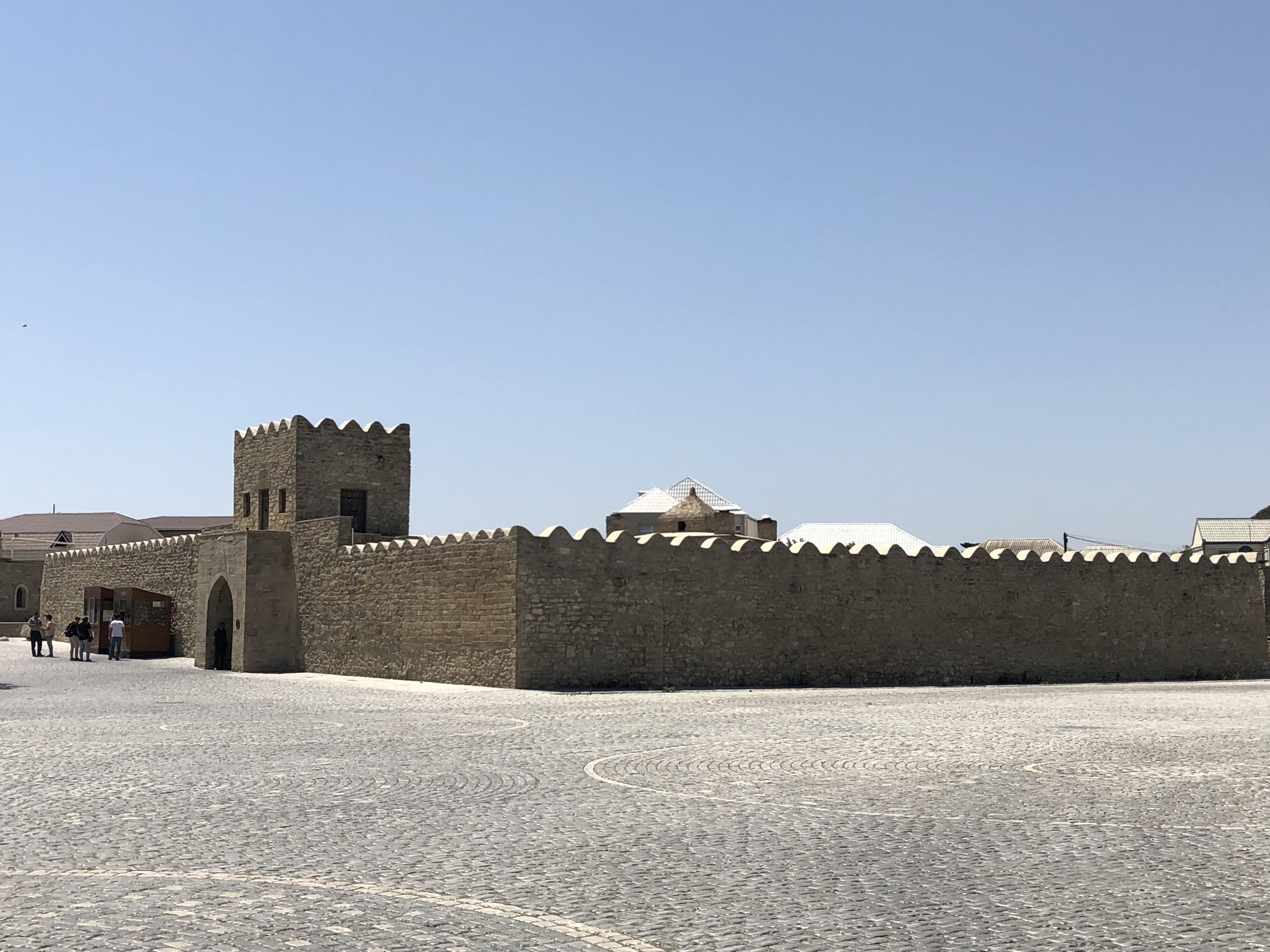
Zoroastrianism is the oldest religion in the Abşeron, with its origins dating back over 3,000 years. Zoroastrians are known for worshipping fire, but they also hold the earth, sky and water in high regard. Some sources believe the founder of the religion, Zoroaster, was born in Southern Azerbaijan where the beliefs started to spread. Zoroaster had a series of revelations called gathas, which were compiled into the Zoroastrian holy texts, known as Avesta. Azerbaijan is a predominately Muslim country today, but communities of Zoroastrians still exist.
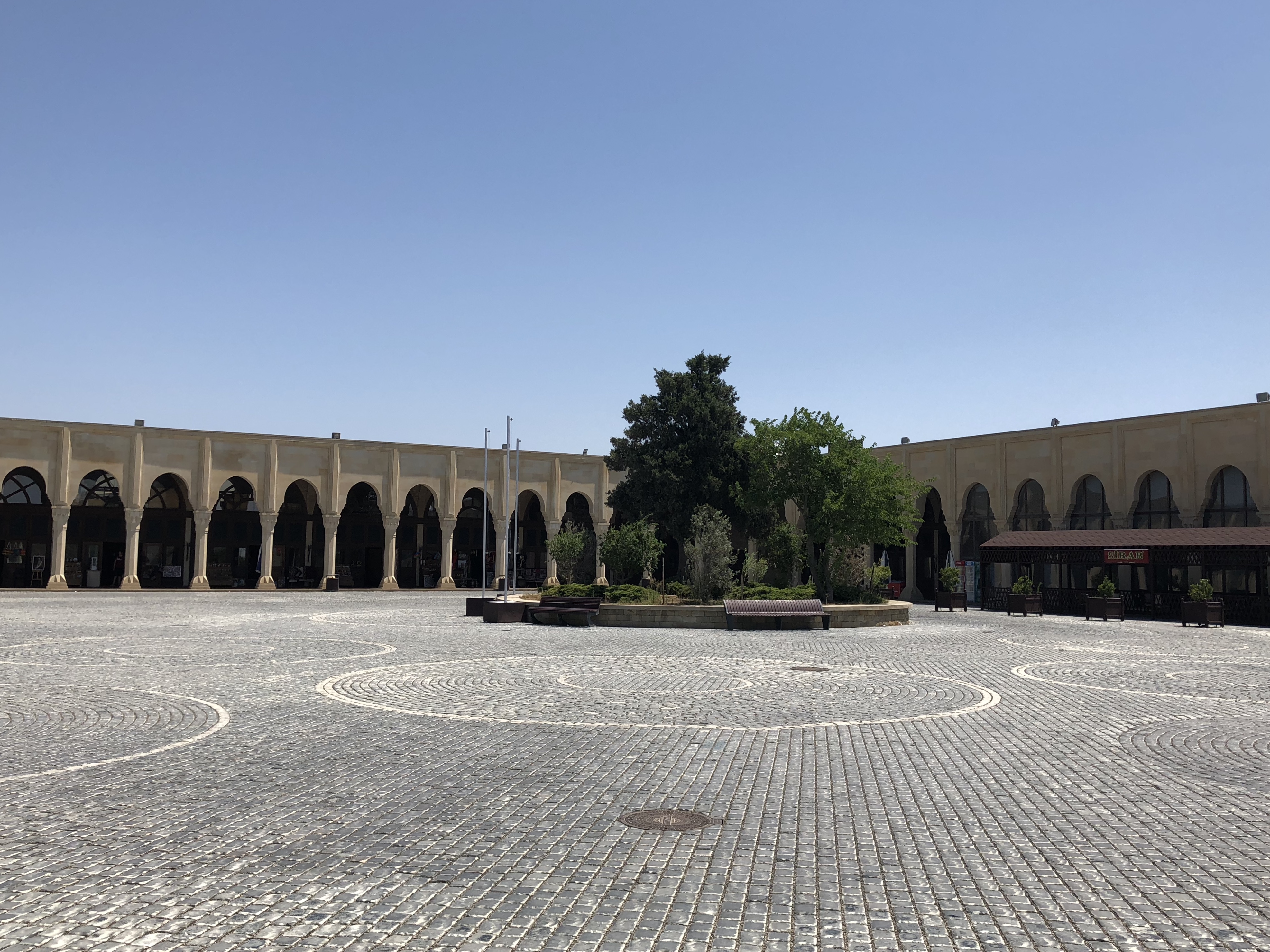
The central altar of Atəşgah məbədi is a sight to behold, with five ever-burning flames. Each room in the surrounding wall has been turned into a museum exhibition on different aspects of Zoroastrianism and ancient life at the temple. Being largely unfamiliar with the religion, I found the displays highly informative and interesting. When I returned to New York City, I was surprised to learn there is a Zoroastrian temple in Pomona, just outside the city, that serves over 1,000 members of the Tri-State Area. The more you travel, the more connected the world seems to become.
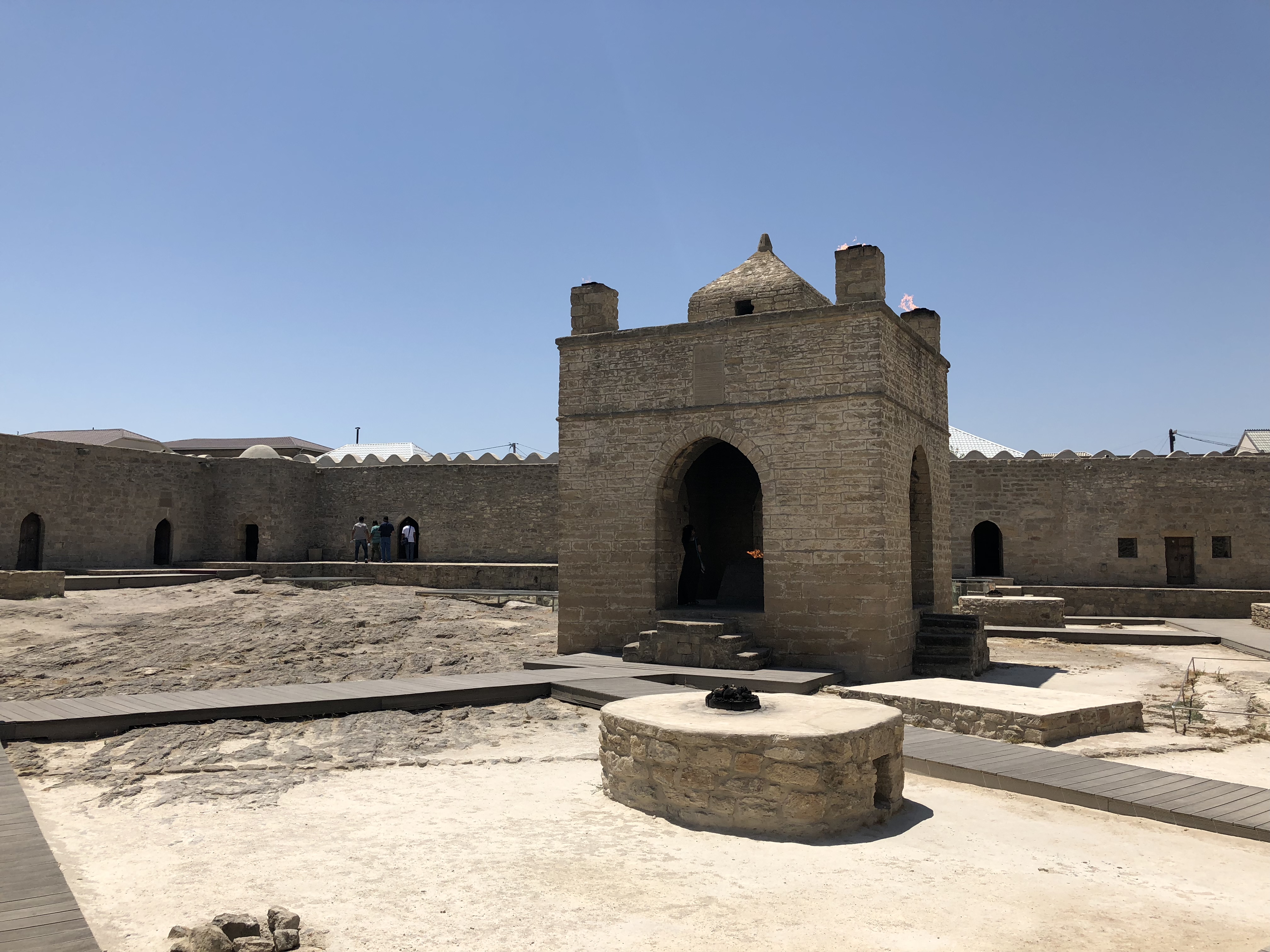
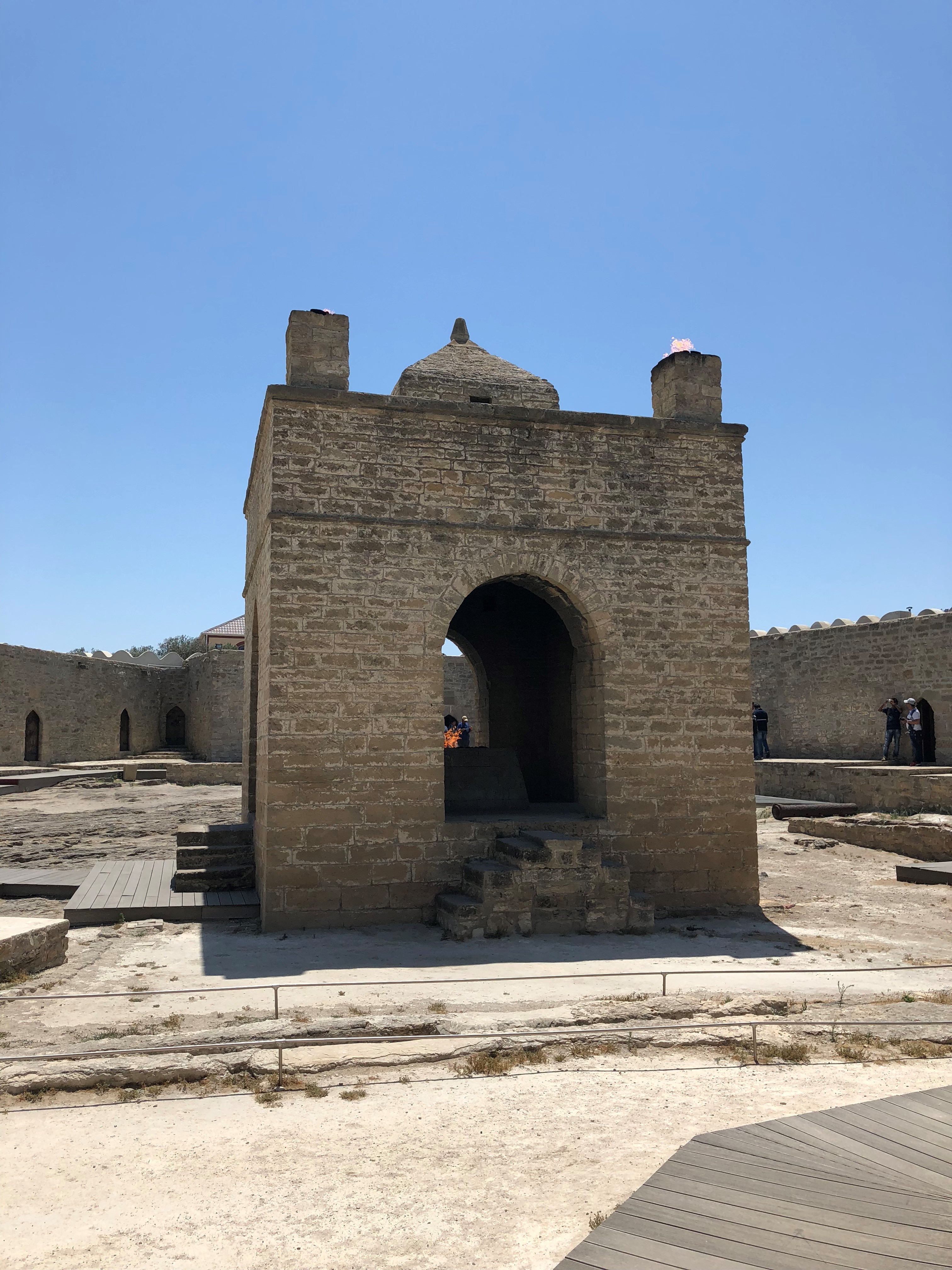
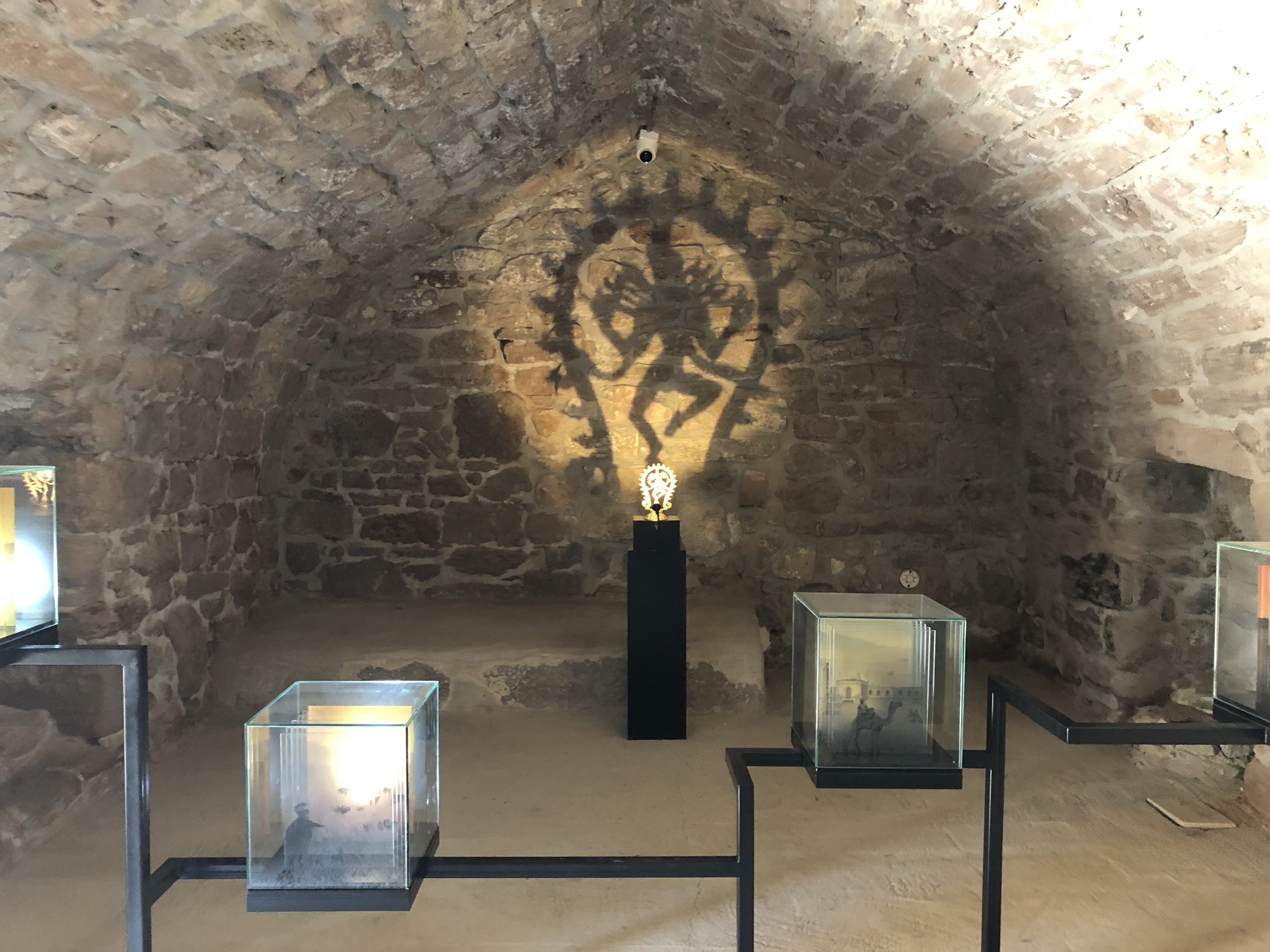
After restocking my water supply at a local market, I was ready to find the first of two buses I would need to take to my next stop: Qala. The bus stop is completely unmarked and there’s no way you will locate it without the help of a local. My suggestion? Try the Suraxanı train station, where I will pick up my Abşeron adventure next time…
